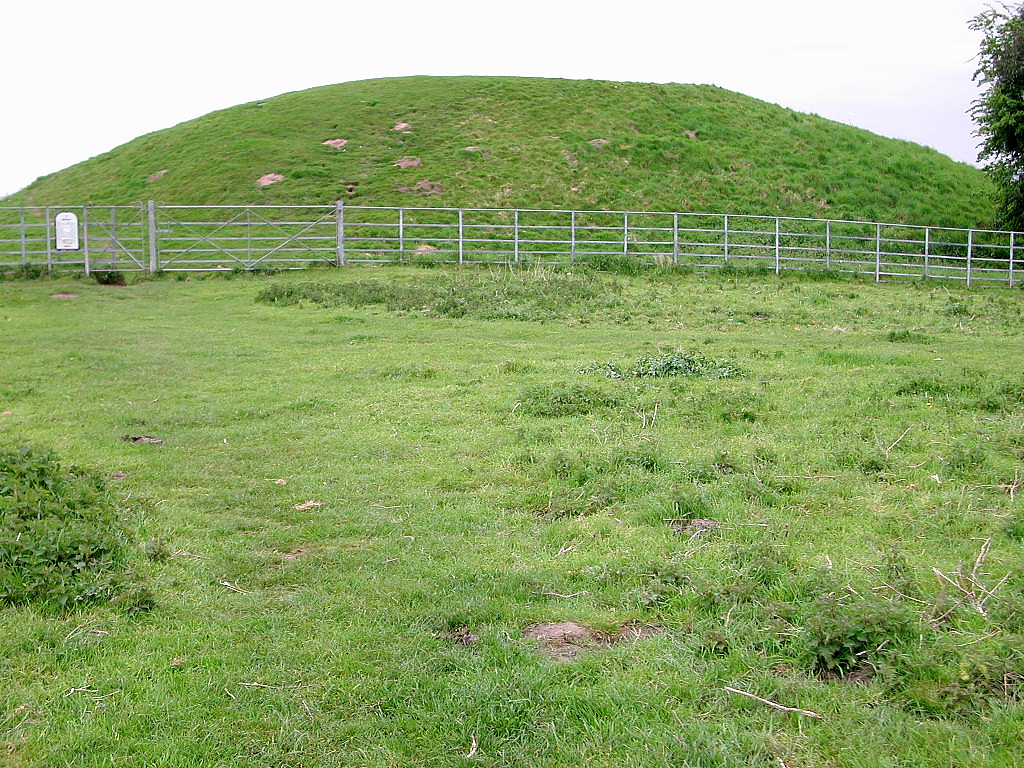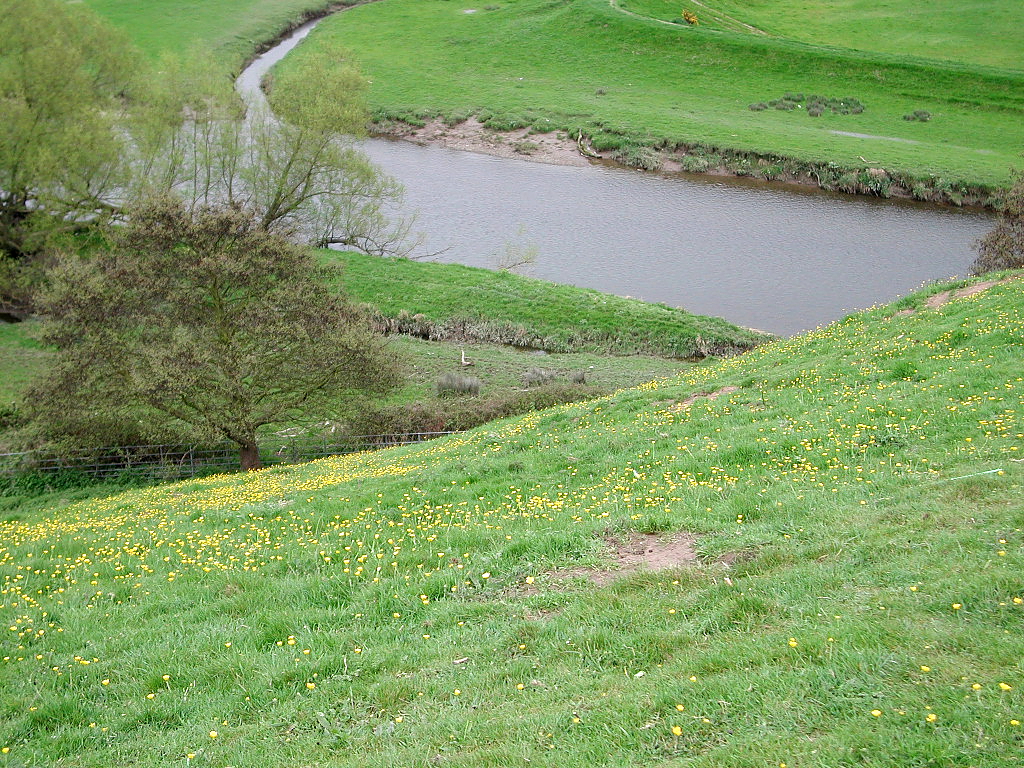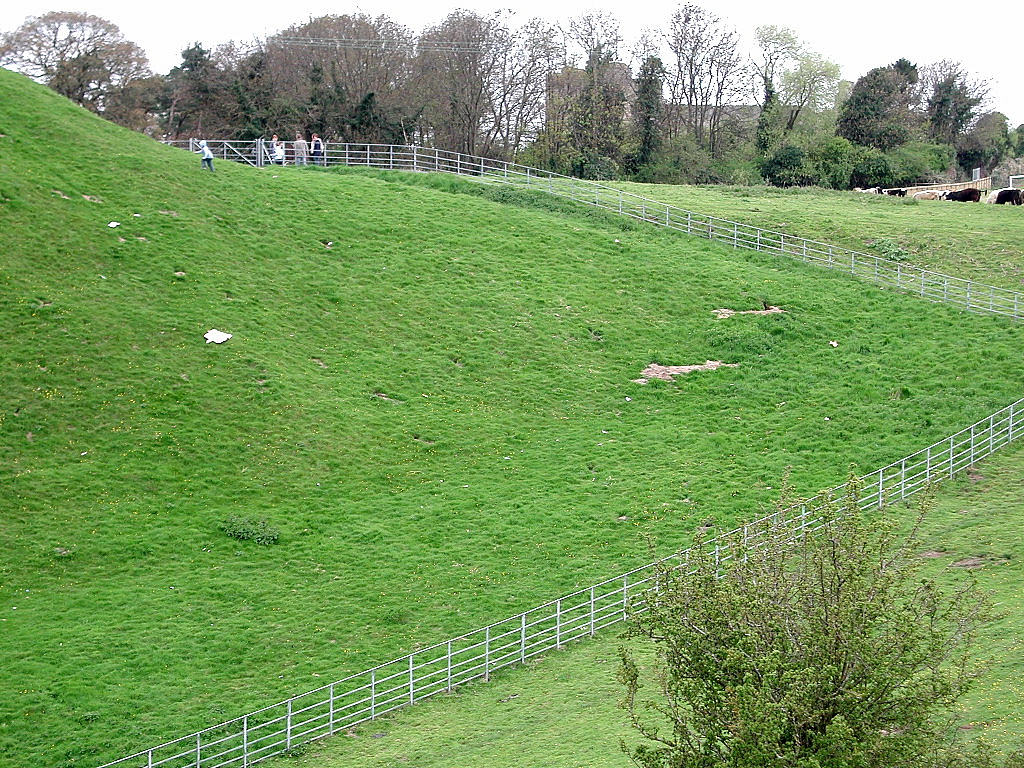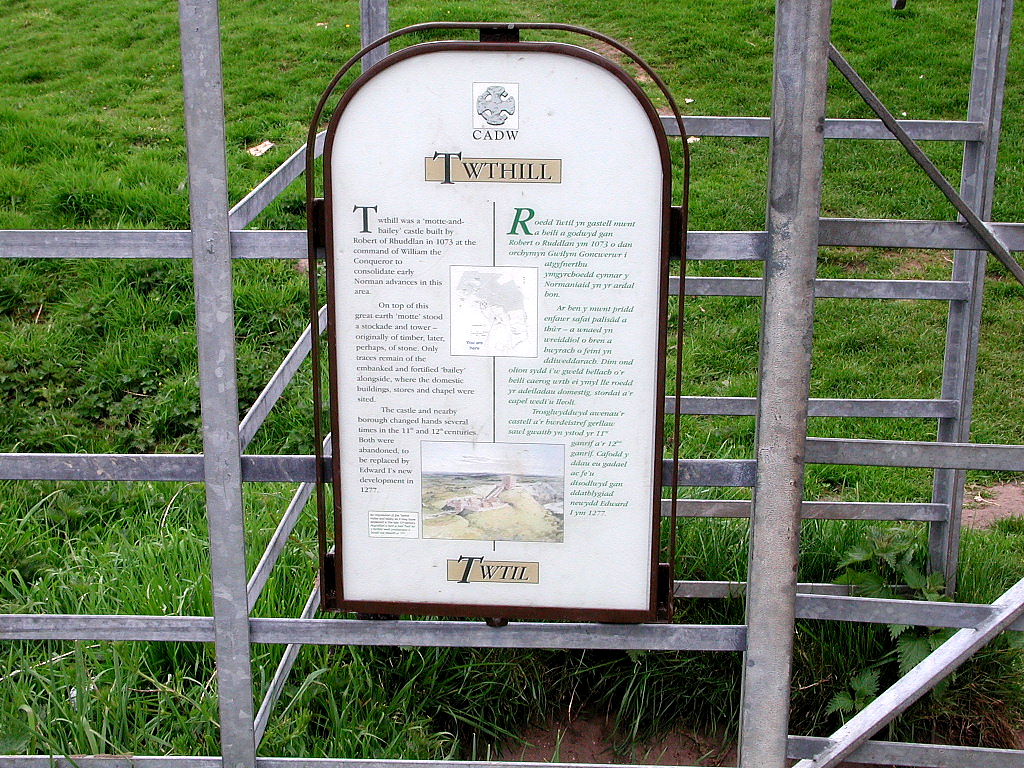| Above: the still substantial motte castle of Twthill (old Rhuddlan) viewed from the public footpath next to the castle. The River Clwyd can be seen at the extreme left of the photograph.
In the year 1063 Rhuddlan was the royal seat of Gruffydd ap Llywelyn and the base from which that powerful prince plundered English lands as far east as Oswestry and Wrexham. In that year, however, Gruffydd was driven to Rhuddlan by Earl Harold (the future and last Saxon King Harold I). Three years later Harold himself lost the decisive battle of Hastings, and the Welsh had henceforth to contend with the organized might of the most powerful military despotism in Europe. At the command of William the Conqueror a new castle, of the motte-and-bailey pattern which marked every stage of the Norman penetration, was thrown up at Rhuddlan in 1073 by Robert of Rhuddlan, a kinsman and lieutenant of Hugh de Avranches, earl of Chester. Earlier, in the 1050s, Robert had been a squire at the court of Edward the Confessor, by whom he had been knighted. From the Domesday Book of 1086 we learn that, in return for an annual rent of L40, the Conqueror had granted him power over the whole of north Wales beyond the Clwyd; it was in this capacity that Robert made Rhuddlan the base from which he set out to exploit and consolidate the holding entrusted to him by the king in Gwynedd, and from which he also took his surname.
Today, Robert's earthen mound traditionally occupying the site of Gruffydd ap Llywelyn's palace, rises impressively to the south of its 13th-century successor, while the outline of its bailey may still be traced in the adjoining fields. From the Domesday Book we also learn that under the joint lordship of Robert and Earl Hugh a small borough was established beside the castle. In 1086 its burgesses, eighteen in number, had both a church and a mint, and enjoyed special privileges and immunities conferred by the laws and customs of Hereford. Silver pennies minted at Rhuddlan late in the reign of the Conqueror and again from c.1180 to 1215 are preserved in museum collections.
Today, Twthill (unrestricted access) is reached via a footpath to the south of the present castle.
Rhuddlan Castle, Cadw: Welsh Historic Monuments, Cardiff, 1987
|








 Learn about Edward I's castle at Rhuddlan
Learn about Edward I's castle at Rhuddlan